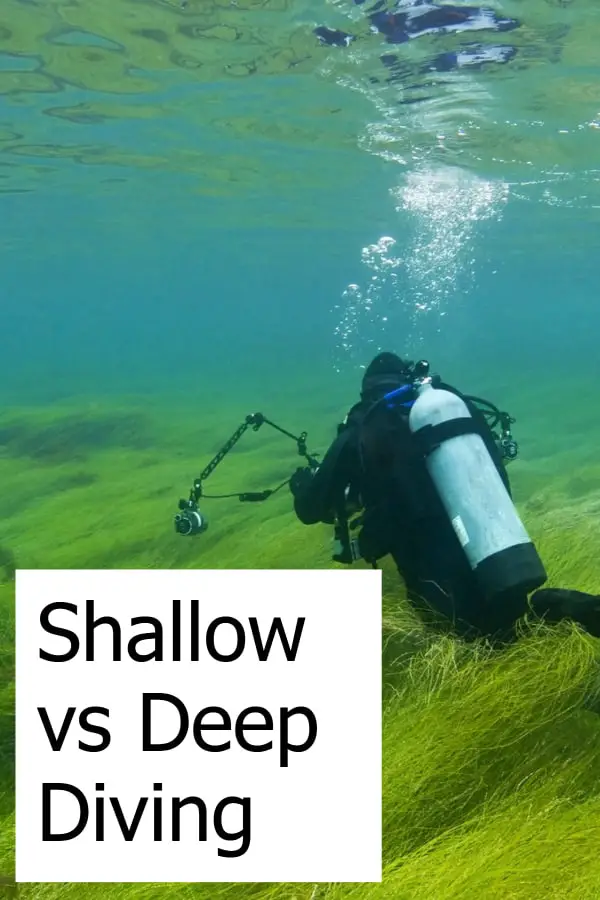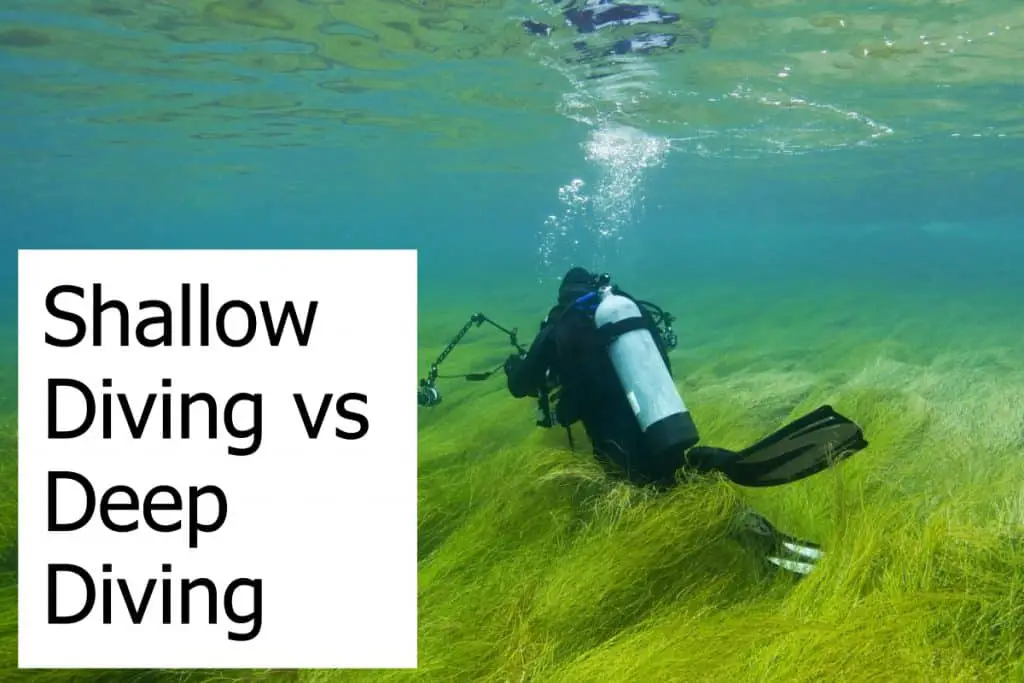Shallow Diving vs Deep Diving – What are the differences?
Which do you prefer? Deep dive or shallow dive? The answer for most divers would be to instantly go for the deep dive assuming that they are certified to do so.
What are the differences between shallow and deep dives? The main differences are, as the phrases suggest, the depth. A deep dive for recreational divers is any dive below 60 ft/18 meters down to 130 ft/40 meters. Shallow dives are typically at depths between 30 feet/9 meters and 40 feet/12 meters.
Shallow vs Deep Diving
Most divers would prefer to do a deep dive vs a shallow dive. Yet, there is a ton of marine life you can see on a shallow dive, at times even more than on a deep one. So, why would most divers rather go deep and stay for a shorter time compared to stay shallow and dive longer?
A shallow dive will significantly increase bottom time compared to a deep dive. It also requires less surface time between dives if you stay shallow. Is it bragging rights to dive as deep as possible or is it something else?
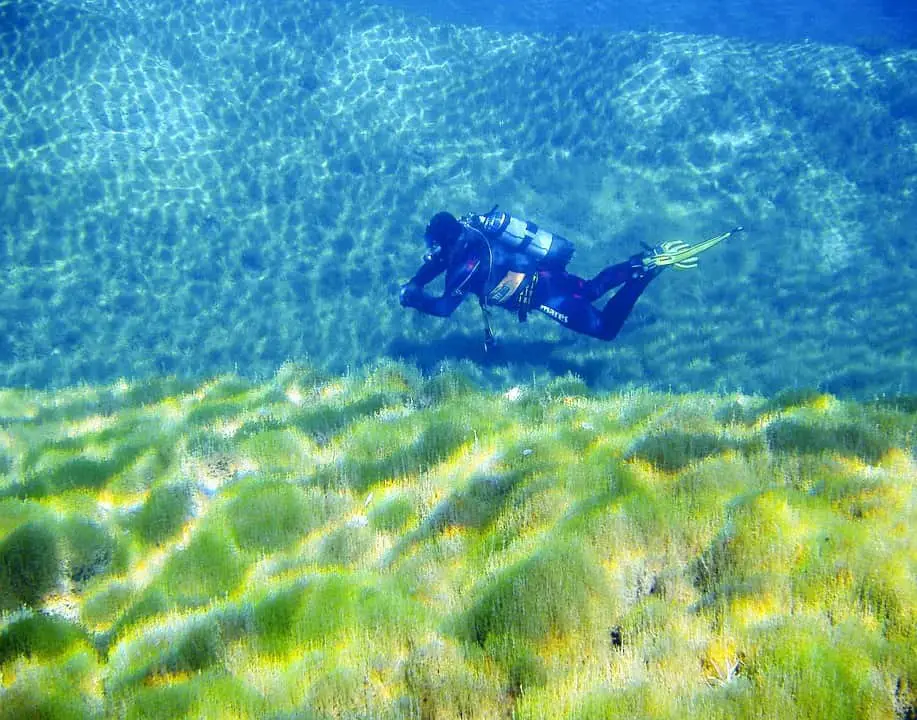
How deep is deep and when does deep start?
There’s no clearly outlined definition of what a deep dive is when you’re scuba diving. There are some definitions that usually go to the 100 feet (30 meters) mark as a deep dive. PADI defines the deep dive to be between 60 feet and 100 feet.
That’s somewhat the definition for recreational divers. In technical diving this limit is pushed further and you’d typically consider a dive below 200 feet as a ‘deep dive’.
The open water certification goes to depths of 60 feet while the advanced open water goes to 100 feet. That’s where the PADI definition of 60 to 100 feet for a deep dive comes from.
Why go deep?
There are a number of reasons why you would want to dive deep vs staying shallow. First, you will experience different creatures when you dive deeper. Depending on where you dive you might also experience completely different surroundings.
An example would be that you typically find healthier and more vibrant coral reefs at greater depths. The sun exposure and destruction from waste is less when you dive deep. The result is more marine life that you can experience.
Other good reasons for deep dives are for example diving a wreck. You can find them in both shallow and deep waters but if you want to dive a particular wreck you might have to dive deep in order to see the wreck and the life surrounding it.
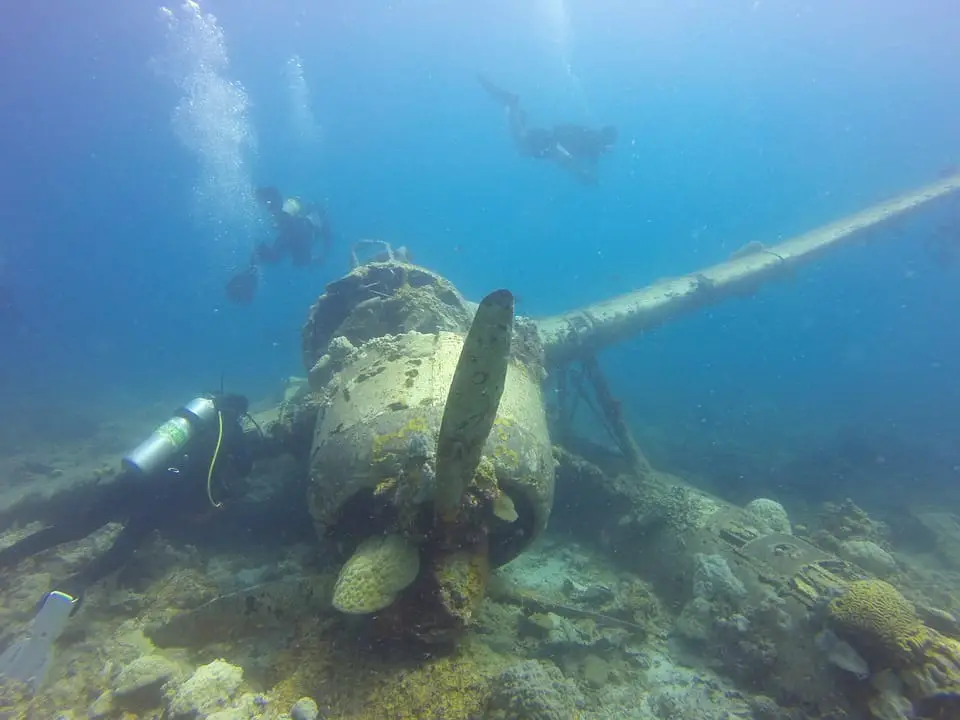
Having said that, shallow dives can be equally as spectacular depending on location and sights. You will usually find different sea creatures in shallower dives. You also can stay underwater for much longer periods of time giving you a chance to experience more as you have better visibility. Wrecks in shallow water can be as fascinating as their counterparts in deep water. The same is true for coral reefs!
Shallow dives often result in more marine life to be seen. That simply comes from the fact that you have better visibility at lower depths as you have more light around you. Colors will also be more vibrant on a shallow scuba dive.
Considerations when diving deep
When you do a deep dive then you have to mindful of your bottom time. A shallow dive at 30 to 40 feet limits your dive time pretty much by how much air you have in the tank.
A deep dive requires more planning as there are potential issues with nitrogen absorption into the body as well as increased air consumption (tips on how to improve your air consumption rate) overall at depth. Avoiding nitrogen narcosis or oxygen toxicity is a real concern when diving deep.
In many cases, scuba divers have to use different breathing gas than air to safely go for deep dives. Depending on the depth, time underwater, and previous dives you have to consider safety stops and make sure you keep enough air in the tank to stay safe! On top of that, you do also have to have an advanced open water certification to dive down to 100 feet.
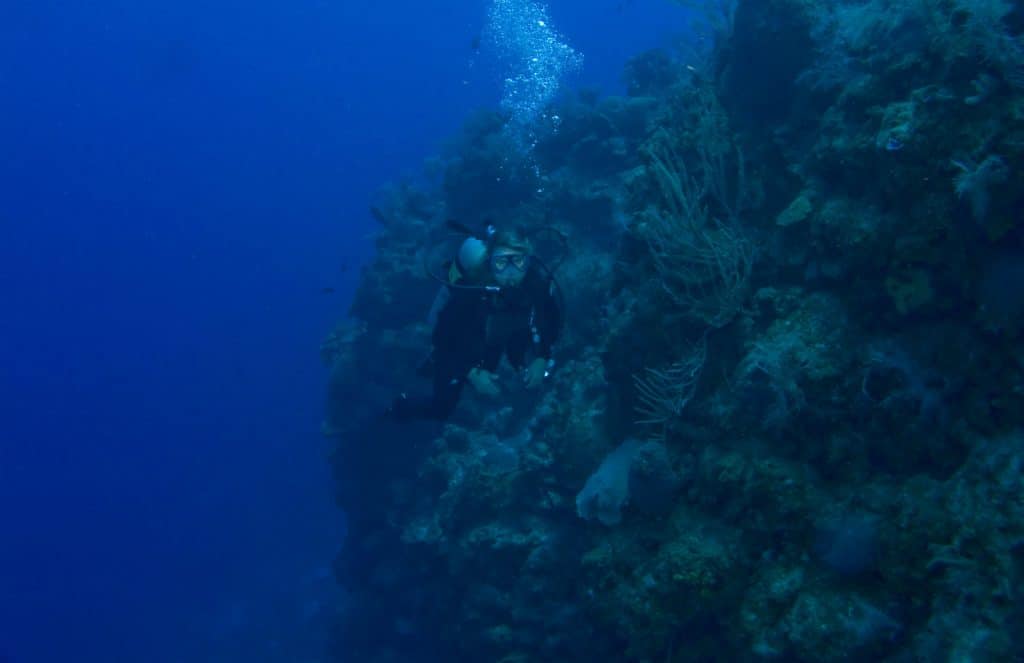
Which one to pick?
There’s no ‘correct’ answer. It depends on your capabilities, your comfort level and what you want to see and experience. If you want to wreck dive and the wreck is at a depth of 30 feet then you’re doing a shallow dive no matter how much you might want to do a deep one instead.
Never go any deeper than what you’re comfortable with and certified for. If you dive deeper than what you feel you can confidently master then you can easily end up with a panic attack which will result in serious risks to your health! Never go beyond your capabilities.
You can and will see extraordinary sights whether you dive shallow or deep. They will be different but there’s really no ‘one is better than the other’ in this case. Try the different depths and find out what you’re most comfortable with.
The most important thing is to stay safe and to enjoy your dive no matter the depth you go down to!
